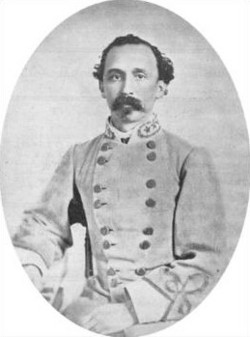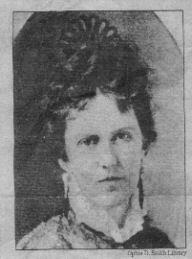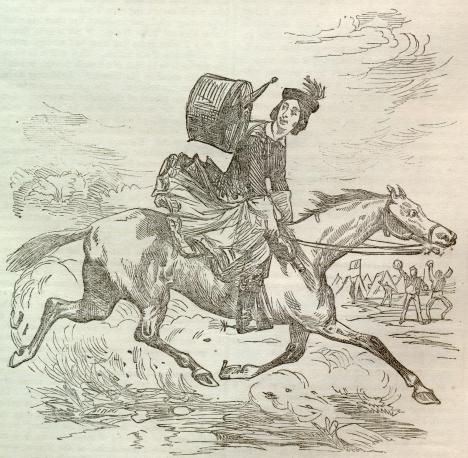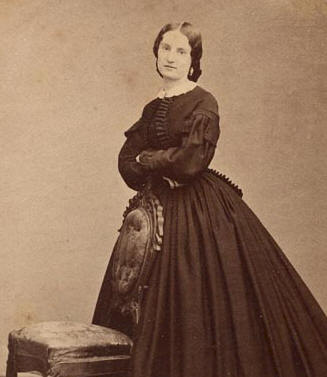Walt Whitman with one of his supposed lovers
We've all heard about Walt Whitman and his homosexuality or bisexuality. If what has been written about Whitman is true, he moved a fifteen year old boy named Bill Duckett in with him as a lover. If true, today Whitman would be viewed as a child molester instead of a great poet. Now that same sex marriages and homosexual rights groups pressuring for equal rights, it should come as no surprise that these people should attempt to degrade the names of famous Civil War heroes in an attempt to better their own cause. When I read a recent blog about some of my Confederate heroes, I couldn't help but shake my head in disgust. If your going to write as a historian, you should do a little research. Yet, the blog I read was written by a homosexual author who wants to use our heroes and good decent men to help his own cause.
Bill Duckett with Whitman at age 15
Among the most ridiculous stories is one that is mentioned in two books, both written by homosexuals to further their own cause. The book American Masculinites and Conduct Unbecoming both attempt to prove a love affair between General Patrick Cleburne and one of his staff officers named Irving Buck. Let's take a look at the comment Buck made about his relationship with Cleburne and what how the books attempt to twist his words.
Buck wrote a biography on Cleburne after the war entitled Cleburne and His Command in which he is quoted as saying, "We were close and confidential. I habitually messed with him and shared his tent and often his blankets."
For those of you who are not familiar with the English language and its interpretation during that time period it may be easy to mistake what Buck was saying. Every soldier in the Civil War would share blankets with another man. Does this mean every Civil War soldier was homosexual? If one studies the gear carried by the soldier and reads books like Sam Watkins's Company Aytch you will understand that each soldier carried a gum blanket (water proof blanket) and one wool blanket. To stay warm at night, one soldier would place his gum blanket on the ground, two soldiers would lie on the blanket, they would use both wool blankets and the other gum blanket on top. This was especially helpful in wet weather and kept both men dry and warm.
While there are those of us that are too immature to understand what "mess with him" means, everyone in the army during those days referred to eating as having mess. In other words when Irving Buck "messed" with Cleburne, it means they ate meals together.
Patrick Cleburne a true war hero
The author of one of these books goes a step further. He attempts to mislead the reader into believing something about Cleburne that is only half true. In his attempt to swing Cleburne to his side of the homosexual argument, he says that Cleburne was a life long bachelor. This is true in a sense. What this idiot fails to tell you in his book is the fact that Cleburne had two girlfriend's back in Helena, Arkansas during the early 1850's and until the time the war began in 1860. One was Maggie Tollison and the other was Marion A. "Mitty" Yerby. He wrote a letter to his mother proclaiming that he had several girlfriends. Another letter to his brother gave the reason why he'd waited so long before marrying. He'd been wounded in a duel helping his friend Thomas Hindman and because of his health, he refused to marry until he was certain he was physically capable of providing for a wife. Because of the bullet wound to one of his lungs, he continued to cough up blood at times. In Helena, Cleburne also had a relationship with the Hargett sisters who were considered the most beautiful women in town. (Irving Buck even mentioned a time when several ladies came to Cleburne's camp to visit. He stated they were so beautiful that he wished he was a Mormon so he could marry them all.)
The two authors of the books mentioned above also fail to mention the fact that Cleburne became engaged to Susan Tarleton of Mobile in 1864. This piece of information would damage their argument, therefore they chose to exclude it and his pre-war girlfriends from their books. Neither author cared much for the accuracy of their books, but chose to twist things to aide their side of the argument and to sell their books. Patrick Cleburne was a moral and upright man. He would be rolling over in his grave if he knew what these future men were doing to his name. Fortunately, the only two people who believe any of this are the two authors mentioned above and they probably know better.
James Jay Archer
Another Confederate general accused of being a homosexual is James Jay Archer of Maryland. Archer's father died when he was a boy leaving him to be raised in a house full of women only. He attended Princeton where he earned the nickname "Sally" because of his frail build. This along with the fact that he became intoxicated and hugged a man that he said he'd shared blankets with during the Mexican War (see Patrick Cleburne above) got him painted today as a homosexual. Archer was also never seen with women and never married. This along with the fact that he may have been somewhat feminine being raised around a family of all women may have helped start the rumor. Still, there is no evidence of him being homosexual.
William Edwin "Grumble" Jones once accused Confederate General William W. Loring of having a lovers spat with a young boy. He noted that he had never seen Loring with a woman and assumed the man was homosexual, but not in so many words. During that time period, no man would mention something like this, but he alluded to the fact. If you know anything about General Jones you will know that he earned his nickname "Grumble". After his wife drowned, Jones had such a sour disposition that he was difficult to get along with at all.
Abraham Lincoln
Being a member of the Sons of Confederate Veterans, I've heard numerous stories claiming that Abraham Lincoln was either homosexual or at the very least bi-sexual. C.A. Tripp in his book The Intimate World of Abraham Lincoln claims that Lincoln spent his entire life with erotic attractions to other men. He goes on to note the living arrangements between Lincoln and his close friend Joshua Speed. They lived in a boarding house for over a year together sharing a bed. Does this make the man homosexual? Not at all, but modern authors and historians attempt to look at that time period through today's glasses. It's just not possible. As I have said numerous times, you can't study a different time period using the values of the present time to make your judgments of men.
As a historian, I would never paint an image of a man, North or South, friend or enemy as something that I can't prove is not true. I would never call Lincoln or Cleburne a homosexual unless I found hard evidence that it was true. These men, both important participants in our nations history whether we like either of them or not, deserve better.



















